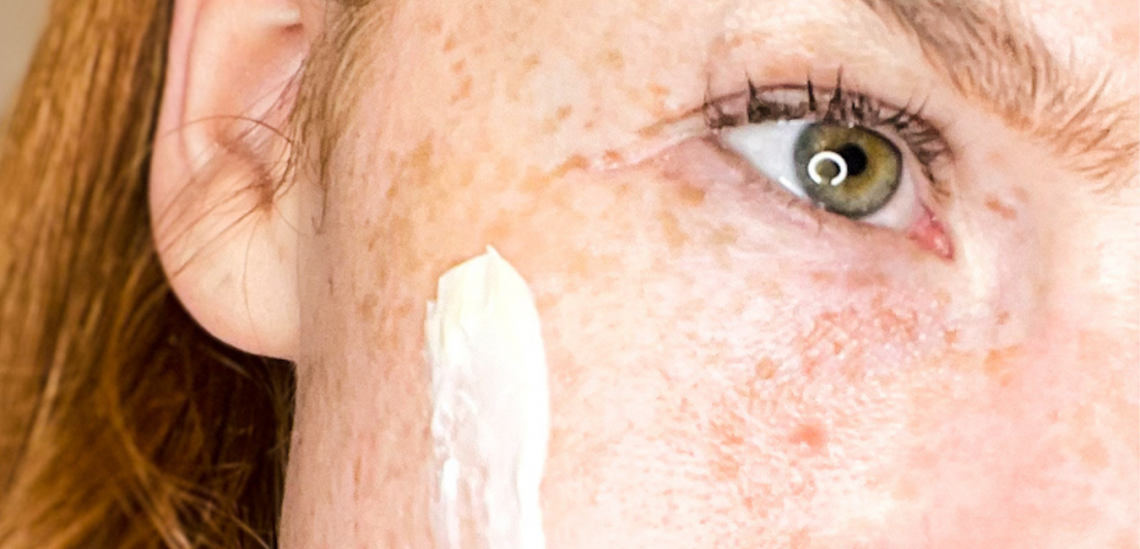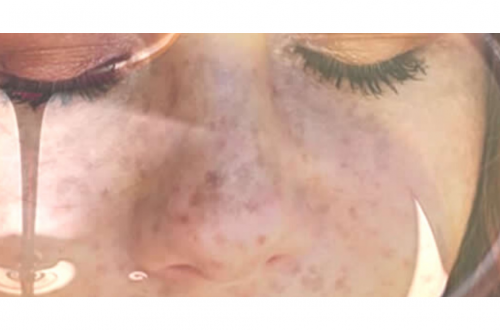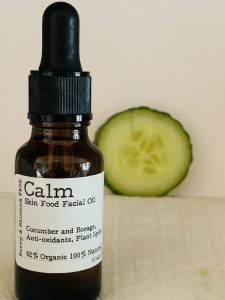Did you know there is a relationship between what you put on your face and how the skin/pores react. Acne occurs if your pores become plugged with oil and skin debris. It occurs faster than normal if the skin is prone to Acne.
Two main types of acne exist: non-inflammatory and inflammatory.
Non-inflammatory Acne
Dead skin cells and oils can form a plug inside the pore and become a whitehead under the skin. Alternatively, if exposed to oxygen the plugged pore darkens and progresses to a blackhead.
Inflammatory Acne
As oil and dead skin cells build up they put pressure on the cells surrounding the pore. When bacteria is introduced, the surrounding skin becomes infected. Eventually creating a red bump or pimple. There are three other types of inflammatory lesions: a pustule , a cyst, and nodule, not o be explicit.
Known causes
Spots and blemishes are experienced by everyone at some time in their life. Everyone will treat it differently. I was told not to eat chocolate or pork. Pork I have never eaten.
Hormones, genetics, diet, stress, and medications can all contribute to acne. However, have you ever thought of ingredients in your skincare and cosmetic products which might be causing the problem by -blocking pores.
Checking Skincare Ingredients.
We all want to use products that will make our skin better and give it a healthy glow. For acne prone skins that can be a difficult process. Plenty of products falsely labelled non-comedogenic do contain pore clogging ingredients of which we are ignorant about.
The Non Comedogenic Scale
If you suffer from spots investigate your skincare ingredients. I recommend referring to the Non-Comedogenic Scale. Comparatively it helps assess cosmetic ingredients. First thing to remember is Scale 1-2 are not pore blocking and 3 is fair.
Scale 5 and higher are comedogenic. Consequently these ingredients should appear at the end of your ingredient list on your skincare labels. These should be the lowest amount in the formula.
As not to be overwhelmed, start your research by printing out the scale. Use it for reference when looking at skin care products. It may take a little more time when shopping but it could make all the difference in your skin.
I learned how natural oils such as coconut oil and cocoa butter are highly comedogenic for face care. Some Retin-A products, acne creams, and even oil free products can have pore cloggers.
All things considered, this information is useful to determine ingredients to avoid. The Scale helps remedy skin blemishes by pin pointing pore clogging ingredients. Educating yourself can actually clear your complexion.
Knowing which ingredients to avoid
Have a look at the list below. All in all are inclined to be pore blocking ingredients. They are used for fillers, emulsifiers, conditioners, one may need the other.
If Acne is really affecting your skin do refer to your Doctor. As a result this information can relieve pore blocking and is helpful to manage your complexion, as part of your beauty routine.
Remember Beauty comes from within too, so Shine and Glow from your eyes, personality and heart.
• Isocetyl Alcohol
• Isocetyl Stearate
• Isodecyl Oleate
• Isopropyl Isostearate
• Isopropyl Linolate
• Isopropyl Myristate
• Isopropyl Palmitate
• Isostearyl Isostearate
• Isostearyl Neopentanoate
• Kelp
• Laminaria Digitata Extract
• Laminaria Saccharina Extract (Laminaria Saccharine)
• Laureth-23 and 4
• Lauric Acid
• Mink Oil
Steareth 10
• Stearic Acid Tea
• Stearyl Heptanoate
• Sulfated Castor and Jojoba Oil
• Wheat Germ Glyceride and Oil
• Xylene Be Aware
• Glyceryl-3 Diisostearate
• Hexadecyl Alcohol
• Hydrogenated Vegetable Oil
• Polyglyceryl-3 Diisostearate
• Myristic Acid
• Myristyl Lactate
• Myristyl Myristate
• Octyl Palmitate
• Octyl Stearate
• Oleth-3
• Oleyl Alcohol
• PEG 16 Lanolin
• PEG 200 Dilaurate
• PEG 8 Stearate
• PG Monostearate
• PPG 2 Myristyl Propionate
• Plankton
• Potassium Chloride
• Propylene Glycol Monostearate
• Red Algae
• Seaweed
• Shark Liver Oil (Squalene)
• Shea Butter
• Sodium Laureth Sulfate
• Sodium Lauryl Sulfate
• Solulan 16
• Sorbitan Oleate
• Soybean Oil
• Spirulina
“Oil-free” products can be comedogenic
• Acetylated Lanolin
• Acetylated Lanolin Alcohol
• Algae Extract
• Algin • Butyl Stearate
• Carrageenan
• Cetyl Acetate
• Cetearyl Alcohol + Ceteareth 20
• Chondrus Crispus (aka Irish Moss or Carageenan Moss)
• Chlorella
• Coal Tar
• Cocoa Butter
• Coconut Alkanes
• Coconut Butter
• Coconut Oil
• Colloidal Sulfur
• Cotton Awws Oil
• Cotton Seed Oil
• D & C Red # 17, # 21, # 3, # 30,# 36
• Decyl Oleate
• Dioctyl Succinate
• Disodium Monooleamido PEG 2- Sulfosuccinate
• Ethoxylated Lanolin
• Ethylhexyl Palmitate
• Glyceryl Stearate SE
Natural oils can be some of the worst offenders, like cocoa butter and coconut oil which are found in many “organic” skin care lines.
Other oils such as jojoba, olive, and lanolin are mildly comedogenic and can be a problem if formulated with other comedogenic ingredients.
Some prescription products like the cream form of Retin A have pore cloggers. Many over-the-counter acne medications also have pore clogging ingredients.



